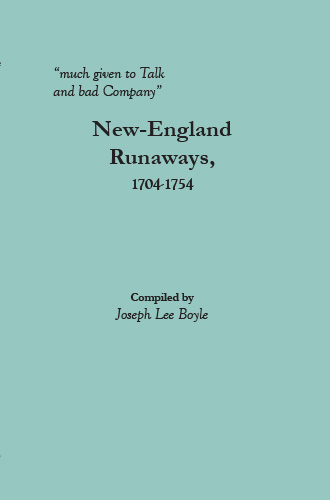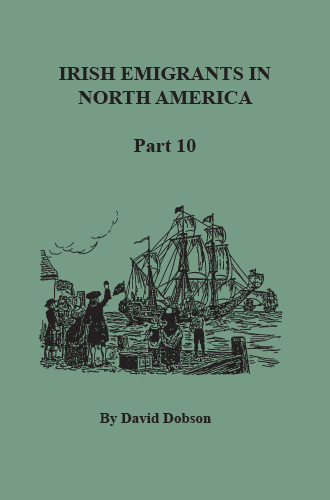
Check out our new releases for December 2020. Three new genealogy reference works available now from Genealogical.com.
“much given to Talk and bad Company.” New-England Runaways, 1704-1754
By Joseph Lee Boyle
Mr. Boyle, who has heretofore extracted the runaway servant newspaper ads for the Middle Atlantic colonies/states, (MD, DE, NJ, PA & NY), now turns his attention to New England. The majority of the individuals in this compilation are runaway servants and slaves, but a number are runaway apprentices, both men and women, military deserters, with horse thieves, counterfeiters, burglars, jail breakers, an occasional murderer, and other lowlifes are represented, as well as supposedly errant spouses. This work also includes individuals with New England connections who did not run away from those colonies. (e.g., Newal Coomes was advertised in New York as “an New-England man” who “pretends to be a Doctor”). In compiling the present work, Mr. Boyle examined 23 newspapers from New England to Maryland. Each ad conveys a number of details about the runaway and his/her master, including names and aliases of the runaway, physical description, personality quirks if any, location in New England (including the future states of Vermont and Maine), and where to contact the advertiser. In all, this book, the first in a projected three-volume series, contains about 1,500 runaway ads and names over 3,000 persons with connections to colonial New England
People of the Hebrides, 1800-1850
By Dr. David Dobson
The Hebrides are a small group of islands off the west coast of Scotland that are considered part of the Scottish Highlands. The second half of the eighteenth century witnessed an outflow of population from the Highlands to the burgeoning factory towns of Lowland Scotland and England, as well as to the Americas and Australia. Another major source of employment for these Highlanders was in military service with the British Army, commencing with the Seven Years War [the French and Indian War] 1756 to 1763, the American War of Independence, and the French Wars from 1789 to 1815.
This book attempts to identify residents of the Hebrides, especially of the islands of Skye, Islay, Mull, Lewis, and Harris, and Hebrideans who chose to emigrate to the Carolinas, Maritime Canada, and Australia, during the early nineteenth century. What is different about Highlander emigration is that they—including the Hebrideans–emigrated as family groups, settling together where they could maintain their Gaelic language, culture, and religion, often in frontier locations such as Cape Breton or the Cape Fear Valley. In all, this work, drawing upon primary sources in Scotland and abroad, identifies close to 1,500 heads of household from the Hebrides by name, a date, a place in the islands, sometimes other family connections, and the source.
Irish Immigrants to North America, Part 10
By Dr. David Dobson
Irish emigration to North America can be said to have commenced in earnest in the early eighteenth century with the ‘Scotch-Irish’ in 1718. By comparison, significant numbers of Irish people could already be found in the English colonies in the West Indies, and to a limited degree in the Dutch West Indies. By the early eighteenth century, however, the Irish were the largest immigrant group to settle in the Thirteen Colonies. During this period the majority of emigrants to America were Presbyterians from the north of Ireland, though this would change dramatically in the nineteenth century. The greatest Irish exodus to America occurred between the end of the Napoleonic Wars in 1815, and the conclusion of the potato famine in 1851. During that span, around one million left Ireland, mainly for North America, but also in smaller numbers for Australia, as well as for the industrializing towns of Britain. Most of those bound for North America sailed from Irish ports though others went via Liverpool or Glasgow. This volume is based on primary sources located in Ireland, the United States, Canada, Scotland, England, and the West Indies. Such primary sources include manuscripts, newspapers and journals, monumental inscriptions, and government records. The author has arranged the list of roughly 1,000 new persons found in Part 10 of this series alphabetically by the emigrant’s surname and, in the majority of cases, provides us with most of the following particulars: date of birth, name of ship, occupation in Ireland, reason for emigration, sometimes place of origin in Ireland, place of disembarkation in the New World, date of arrival, number of persons in the household, and the source of the information.








are there books about a pre Revolutionary War exodus from Mass to Nova Scotia? I understand the king offered land grants to entice Protestants to replace the ousted Catholics.